
Breeze on From the Get-Go at Rolex Big Boat Series
“Today was pretty high winds: 25-27 knots,” said John Egleston when we talked with him at the St. Francis Yacht Club docks yesterday evening following the first day of racing in the Rolex Big Boat Series. The Eglestons and their crew sail the sleek black 56-ft 1928 P Class cutter Water Witch.
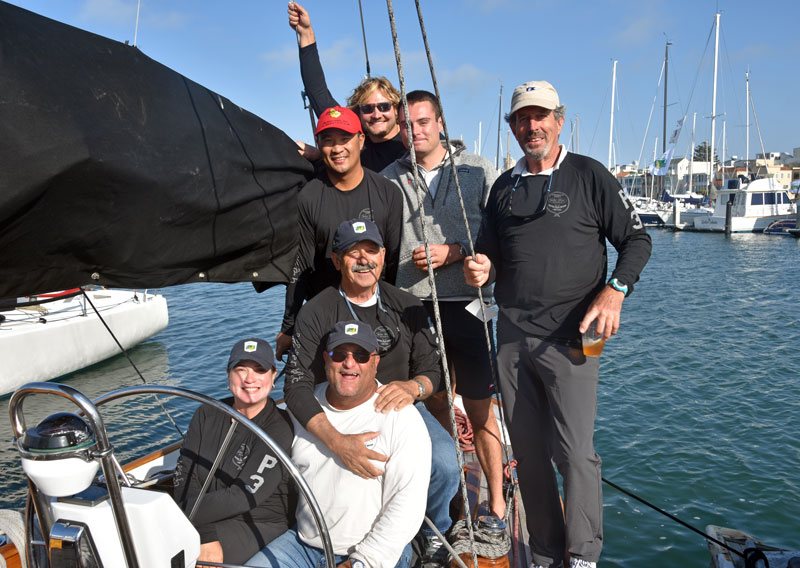
“I pulled into the parking lot this morning and there was breeze, so we knew we weren’t going to have a postponement, and we didn’t,” said Cam Tuttle, pit on the Dehler 46 Favonius. He called it a “super-pretty day.”
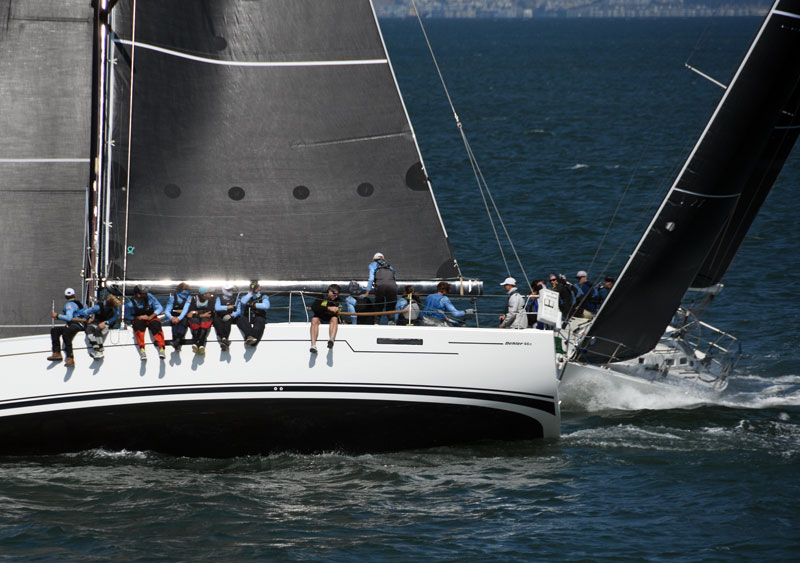
The Classics division was back with five entries. They have one race each day, starting and finishing in front of the St. Francis. (Other divisions have two races a day, Thursday-Saturday, and one Bay Tour on Sunday.) Michael Zolezzi’s 8-Meter Yucca, with Hank Easom at the helm, finished first, but Beau and Stacey Vrolyk’s 60-ft 1947 Alden schooner Mayan was hot on her heels.
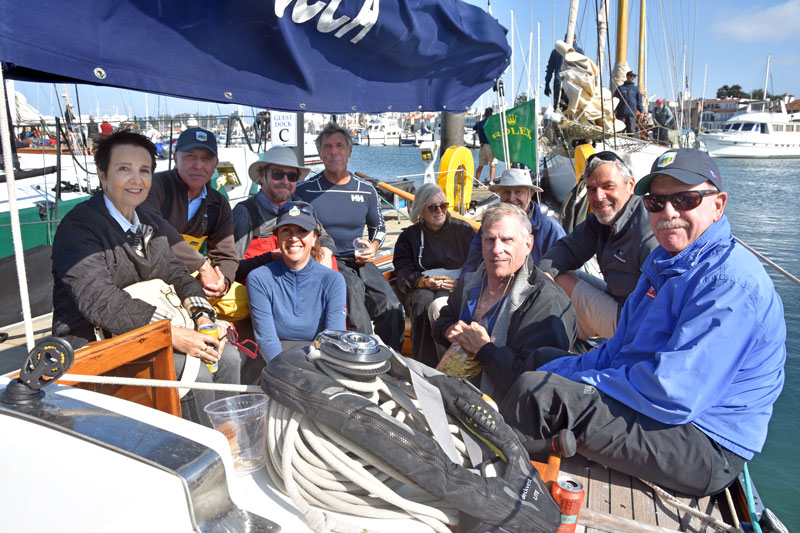
Synthia Petroka, sailing aboard Mayan, told us that their one race, on the second-longest course available, took about two hours. “Nice to be out there in so much wind. We set the kite three times. There were seven legs altogether, 11.7 miles. When we got up to the mark at Cavallo Point [Sausalito], the mark had gone walkabout. We were seeing this temporary mark over here, then we saw a mark on a race committee boat. They were zooming up as Yucca and us were neck and neck looking for the mark. They [the race committee boat] got there and set it, and we rounded. The race was very exciting. We were so close with Yucca the whole time. We were a schooner short-tacking up the Cityfront. Thankfully, I wasn’t trimming any of the upwind sails,” she said with a chuckle.
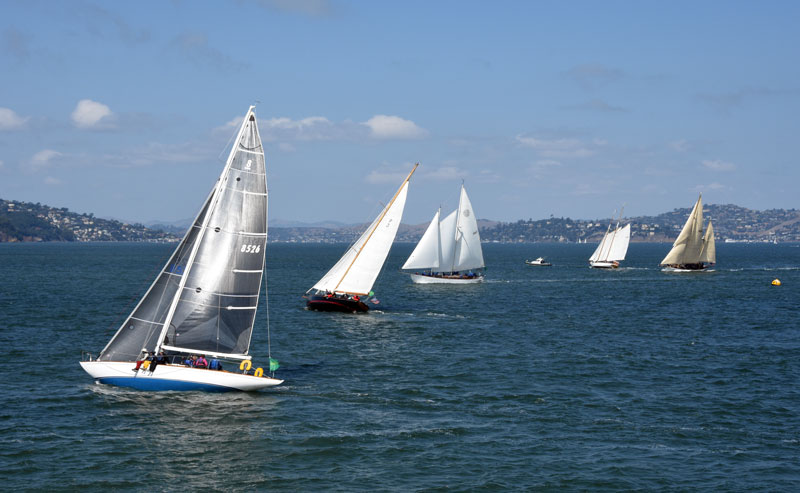
“Our mid-deck crew did an awesome job,” continued Synthia. “I’ve heard that Yucca owes us time, but I looked through all of the race instructions and it doesn’t show our ratings. We changed our sail configuration to less sail area so presumably we got a bit more of a favorable rating. But Yucca also went from a masthead to a fractional spinnaker, so hard to say. Last year, Mayan and Yucca were leading the pack and duking it out. This course really put us through the paces. It was fun!”
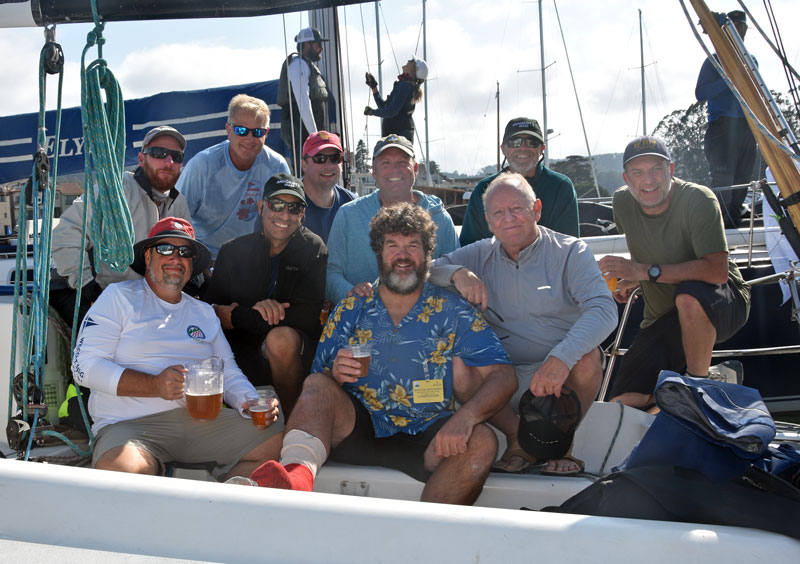
Aboard Chip Merlin’s Merlin, the Bill Lee 68 sled, foredeck crew Dale Scoggin recounted some mishaps. “The first race we did everything well as far as boat handling, tactics, then afterward we heard on the radio the second-place boat Adjudicator protesting Merlin for sailing around the wrong second windward mark. The Fort Mason buoy was the actual mark. We went around another buoy that we assumed was the mark. Then we re-read the description and realized that is was the yellow can, actually.”
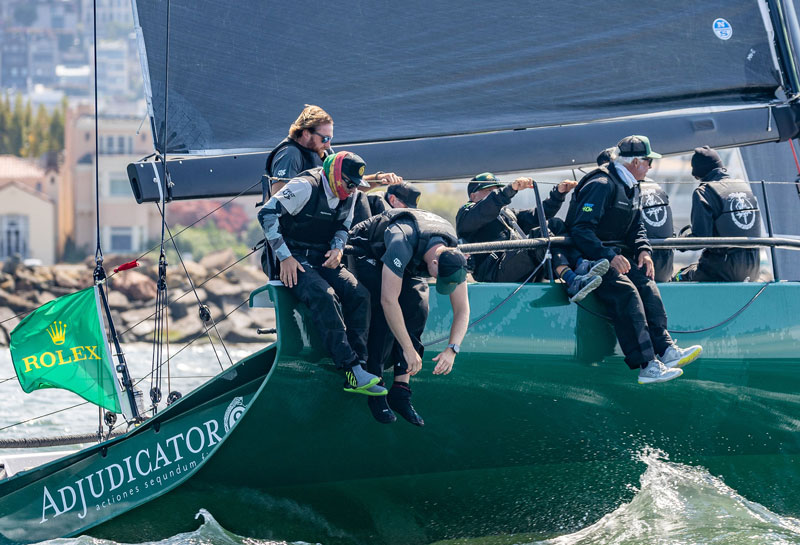
Merlin’s troubles become more serious in Race 2. “In the second race, our spinnaker halyard got wrapped around the top of the forestay. We didn’t notice at the time, but it chewed the forestay down to three strands. We could have lost the rig. When we came around the leeward mark, we couldn’t get any tension. ‘What’s going on here? We can’t get any forestay tension.’ They were putting on backstay, saying, ‘Something’s wrong.’ So we took everything down. Now we’re talking to a bunch of different riggers to come and replace the whole forestay overnight. Hopefully we’ll get that replaced and we’ll be back in action for the rest of the regatta. It’s very nice going through the water. Because of the flood, it’s so flat out there, and the boat tracks upwind so nicely.”
The yacht designer Bill Lee himself is sailing aboard Mayan.
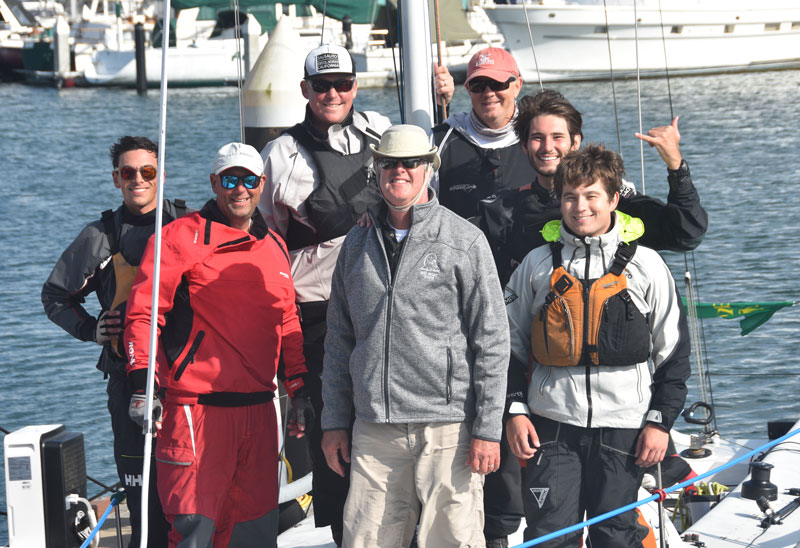
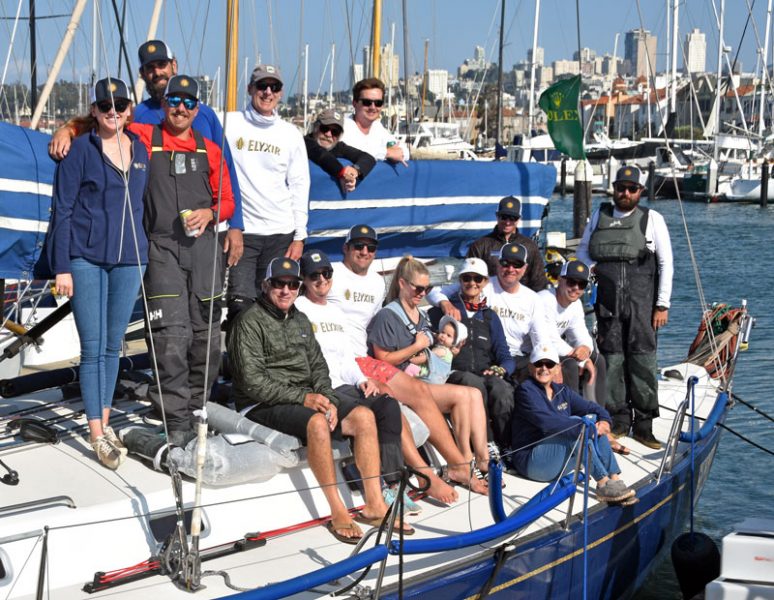
“It’s the most exciting regatta in the United States,” said Skip Ely, up from Santa Cruz again with his family’s Santa Cruz 52 Elyxir. “Sailing underneath the Golden Gate Bridge and on the San Francisco Cityfront in 20+ knots of wind — it doesn’t get any more exciting than that.”
Is San Francisco Bay’s Fog Disappearing?
What do you think? Are our summers less foggy these days? The New York Times recently reported San Francisco’s fog may be disappearing. There are a good number of scientists studying the phenomenon and, like most early scientific studies, the current consensus is a definite maybe. They interviewed gardeners in Golden Gate Park, Golden Gate Bridge painters and fog horn tenders, plus the Coast Guard and the Vessel Traffic Service. Most seem to feel there’s less fog, but the needed, long-term consistent measurements appear to be lacking.

The Times wrote, “Every summer, fog breathes life into the Bay Area. But people who pay attention to its finer points, from scientists to sailors, city residents to real estate agents, gardeners to bridge painters, debate whether there is less fog than there used to be, as both science and general sentiment suggest.” Latitude 38 readers are the sailors in that sentence. What do you think? Is there less fog?
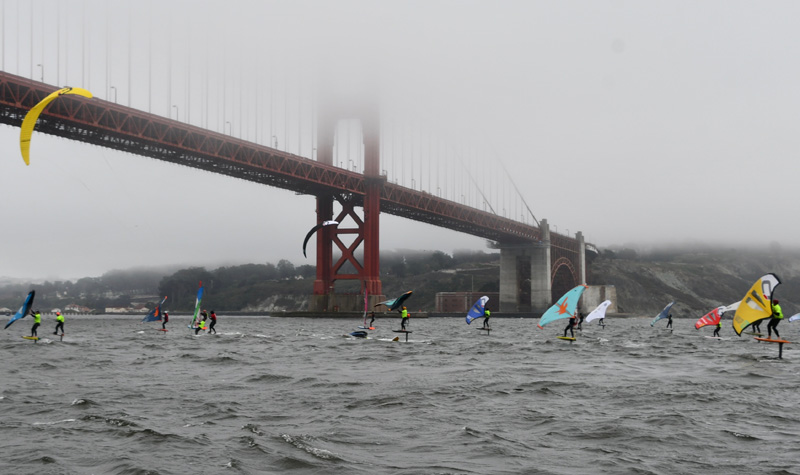
As Mark Twain noted and Herb Caen celebrated, San Francisco is the coolest major city in the continental US during the summer months. The fog can be a plus for a sweatshirt salesperson selling to a T-shirt-clad tourist on the Golden Gate Bridge. However, it makes sailing the Central Bay in the summer cool and challenging. The Coast Guard Golden Gate rescue station is one of the busiest in the country.
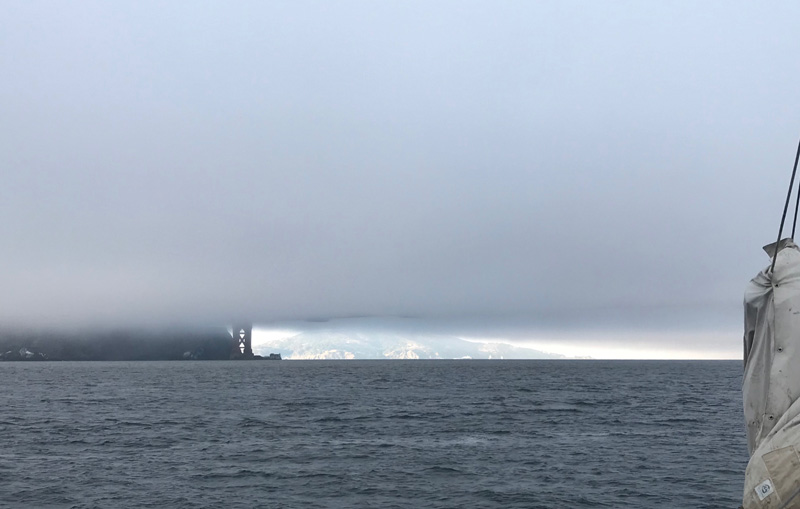
According to the Farmers’ Almanac the lighthouse on Point Reyes National Seashore is one of the foggiest places in North America, running second only to Grand Banks, Newfoundland. The Farmers’ Almanac says it is also the windiest place on the Pacific Coast. Windier than Point Conception?
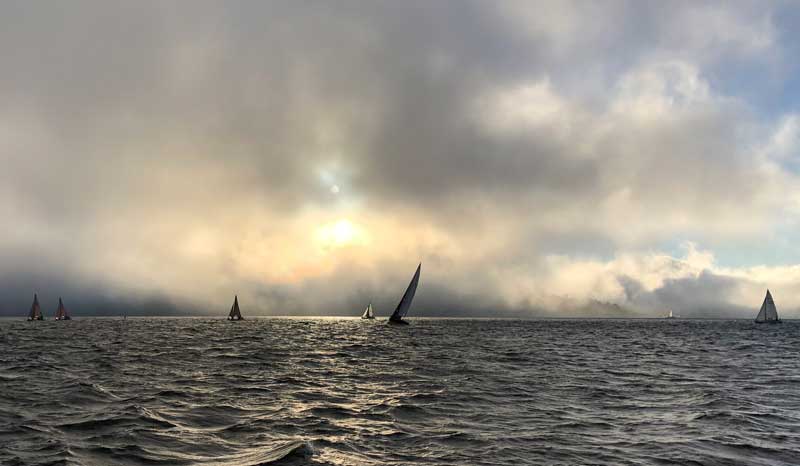
With lots of ship traffic, the fog, in addition to wind and current, is one of the many reasons there are so many wrecks on the Pacific Coast and in and around San Francisco Bay. Our recent podcast with Brian Crawford told just a few of the tales of Marin shipwrecks from Duxbury Reef on into the Bay. Better charts, GPS and other navigational aids have reduced the number of wrecks, but could reduced fog be helping? Most casual observers questioned in the story feel that there is less fog. If this is true and continues, it will affect everything from redwood trees, to crops, to sailing. Back in 2018 we were writing about people feeling that perhaps the winds were getting lighter.
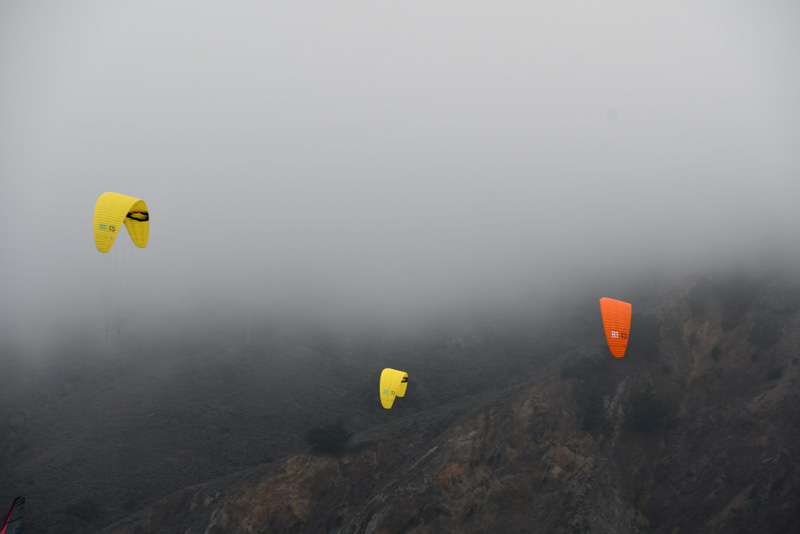
We’re sure the first thing that followed the human development of language was debate about the weather. It continues today. The Rolex Big Boat Series is underway, with rain forecast for the last day on Sunday. How many times has that happened? Nome, Alaska, is about to be hit by a “superstorm” this weekend, with storm surges possibly 10-12 feet over normal. To us, the rhythm of the fog feels pretty normal, but we have a consistent, uneasy feeling about the weather, and our senses remain alert to the changes.
What about you? Do you think there is less fog?
Earn While you Own in a Lagoon 380
Place in our skippered charter fleet and your boat earns while you are not using it. Download the equipment list.
Paper Navigation Charts Set To Be Phased Out by 2026
The UK Hydrographic Office (UKHO) has announced that it will stop producing paper nautical navigational charts. The organization, which provides hydrographic and marine geospatial data to mariners and maritime organizations across the world, says the move is in response to “more marine, naval and leisure users primarily using digital products and services for navigation.”
Sailor Tom Cunliffe wrote in Yachts & Yachting, “As a man whose navigation pre-dates GPS by decades, I suppose my knee-jerk reaction to this was predictable.”
“… My first call when passage planning is the paper chart. It’s big. I can see where I’m going and make sensible decisions regarding routing. If I want detail it doesn’t deliver, I can resort to the plotter for specific areas, and when I’m executing the passage both are in use for the same reasons. Paper chart and plotter used together intelligently create a marriage made in heaven. It gives us all any pilot has wanted since Noah ran ashore on Mount Ararat.”
Cunliffe has sailed thousands of miles and across almost every ocean. After learning to sail as a teenager, he quit college and embarked on a sailing career, much of which he has recorded in journals and books that span his decades on the water. We get the feeling his opnion is valid, and likely shared by mariners around the world. So why, then, are paper charts being phased out?
UKHO’s statement added that the phasing out of paper charts will take place over a number of years, with an anticipated conclusion in 2026. They write that the “ADMIRALTY Maritime Data Solutions digital navigation portfolio can be updated in near real-time, greatly enhancing safety of life at sea (SOLAS).”
But as Cunliffe wrote, “The world of litigation is full of sailors who hit rocks ‘not on the chart.’ The bricks were there all right, but the casualty didn’t zoom in tightly enough for the layering arrangements to reveal them.” Again, he makes a valid point.
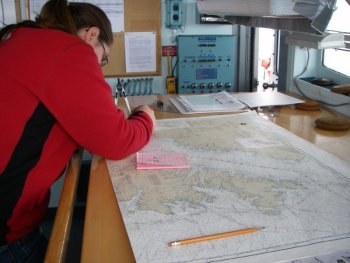
We expect all sailors have used electronic charts. How many have experienced the lack of nuance available on the screen? To fully see everything within the range that the boat may veer to port or starboard, depending on the variations in wind and currents, one needs to “zoom” out, thereby losing detail, and to see the detail, one needs to “zoom” in, thereby losing the bigger picture. A paper chart will show everything, all at the same time.
UKHO has stated that as it phases out the paper charts it will “focus on providing digital alternatives to meet demand…” giving users “ample time and support as they switch to those digital alternatives.”
The Royal Yachting Association, renowned for training sailors the world over, says in Sailing Today that while it is hopeful the new digital charts will improve navigation for recreational boaters and looks forward to working with and supporting the UKHO in their plan, it will continue to teach using both digital and traditional navigation techniques. Eventually, however, it expects the emphasis will shift toward more electronic-based techniques.
In 2019, NOAA announced it would phase out nautical paper charts from 2021, with the process expected to be complete by January 2025.
How will this affect your navigation techniques?
A Naked Scene From a Liveaboard Life
This story by Tim Litfin appears in our September issue. It’s so much fun, we decided to share it again…
When I woke this morning, I never imagined that the day ahead could include my running home barefoot through the cold night air, wearing nothing but a used garbage bag.
I blame computers.
You see, I live aboard a lovely classic yawl. It started when my main computer’s motherboard failed and needed replacing. It was built into the boat, with the motherboard literally screwed down onto an integrated piece of furniture. Everything on a boat has to be secure, the computer especially so. The replacement project had been looming for a long time. It took most of a week, but the result was a huge improvement in hardware serviceability.
Windows didn’t like being moved to new hardware, and I was fighting it for days before resigning myself to reinstalling all of my software on a new OS.
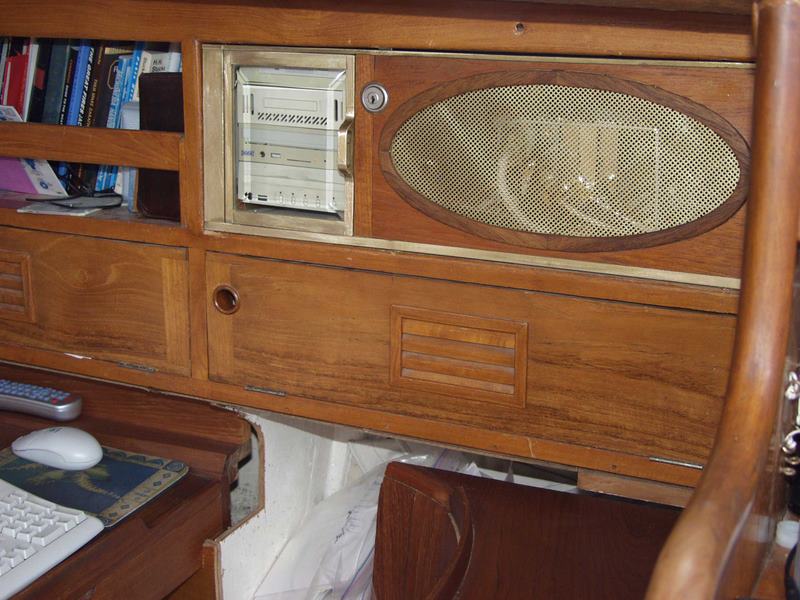
Exhausted, waiting for new software to download, at last I had time to get a shower. We have a shower on the boat, but I generally use the harbor’s shore facilities so I can linger under hot water for a good five minutes without worrying about having to refill the boat’s freshwater supply.
A chilly walk to the shore facilities delivered a reliably delicious shower, after which I finally felt human again. That moment took a sharp turn into exasperation when I looked out into the drying area of the shower room and discovered I had forgotten to bring my towel from the boat.
Let me remind you it’s cold, say, 45-ish. Migration-spurring, hypothermia-inducing cold. It’s frickin’ December, and I’m in a drafty, cinder block building, naked and wet. My only option, besides putting on my clothes while dripping wet and walking back to the boat that way on a cold, windy night, was to get a bunch of paper towels from the outer boater’s restroom area.
I opened the door from the shower room, and, being a smart monkey, I carefully slid the deadbolt over to ensure the door wouldn’t spring shut, a time-tested technique. As I stepped dripping into the boater’s restroom area, just like an unbelievable slapstick comedy skit, the door to the shower room slammed shut behind me anyway (apparently the deadbolt had been damaged). So now I’m standing naked and wet in the boater’s restroom, already cold, and a little stunned, with all of my clothes and keys locked in the shower room. I start drying off with a quickly diminishing inventory of paper towels. There wouldn’t be enough even for that. My only option at this point was to make a run for my boat, with only one locked 10-ft-tall gate between that plan and certain success. Naked. Wet.
Find out what happened next in September’s Latitude 38.


